New Gas Chromatography Products at Pittcon 2009
LCGC North America
John Hinshaw presents his review of all that was new and innovative at Pittcon 2009 in the field of gas chromatography.
The Pittsburgh Conference retains its place as the preeminent annual analytical sciences meeting in the U.S. This year's conference witnessed the withdrawal of a number of companies from the exhibition. Most notable for gas chromatographers was Varian Instruments' choice to present posters and papers on their latest developments at the conference while shifting sales, marketing, and application information to an online exhibit at http://www.thevarianexperience.com. Reflecting this trend, the number of registered exhibitors was down from 2008's level, although the total number of registrants was only slightly less than last year's New Orleans venue. The number of nonexhibitor conferees increased a little, a trend that is in line with past increments seen whenever the conference moves north to Chicago. This year's technical program was as strong as ever, with more than 2400 presentations that included expanded conferee networking sessions and over 100 short courses. At this year's meeting, the American Chemical Society Division of Analytical Chemistry (ACS-DAC) hosted a celebration of the 25th anniversary of its Subdivision of Chromatography and Separation Chemistry (SCSC) along with six symposia as part of their ongoing coprogramming with the Pittsburgh Conference. Next year, the conference returns to Orlando, Florida from February 28 through March 5, 2010, and in 2011 it will be held in Atlanta, Georgia.

John V. Hinshaw
This annual "GC Connections" installment reviews gas chromatography (GC) instrumentation and accessories shown at this year's Pittcon or introduced during the previous year at conferences such as ASMS (June 1–8, 2008). For a review of new chromatography columns and accessories, please see "Column Watch" in the March and April 2009 issues of LCGC (1,2). The information presented here is based upon manufacturers' replies to questionnaires, as well as on additional information from manufacturers' press releases, websites, and product literature, and not upon actual use or experience of the author. During the conference, I took time to walk around the convention aisles and see some of the new products firsthand as well as discover a number of items that were not covered by the questionnaires. Every effort has been made to collect accurate information, but due to the preliminary nature of some of the material, LCGC North America cannot be responsible for errors or omissions. This article cannot be considered to be a complete record of all new GC products shown at this year's Pittcon because not all manufacturers chose to respond to the questionnaire, nor is all of the submitted information included here due to the limited available space.
GC Instruments
Again at this year's Pittcon, GC instruments continued to show a surprising number of new product introductions or major upgrades for a mature science. Although no awards were won, the array of new offerings was broad and innovative. See Table I for the list. Agilent introduced the model 7820A GC system as a follow-on to the model 7890A GC system that was introduced two years ago, also here in Chicago. The new model is targeted for routine, standardized GC methods with its simplified keypad and available inlets, detectors, and accessories that cover routine applications outside of those found in research or infrequently used methodologies. The model 5000B from Konik brings additional horsepower to the company's offerings in a system that is useful for standard GC analyses as well as conventional multidimensional methods. In addition, this system can perform high performance liquid chromatography (HPLC)–GC or HPLC–GC×GC separations.
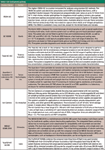
Table I: GC instrument systems
The remaining new GC systems all incorporate mass spectrometry (MS) detectors as standard, the most unique of which is O.I. Corporation's Ion Camera nonscanning dispersive mass spectrometer, which incorporates an optional micro-GC inlet and column assembly that are fully integrated into the mass spectrometer case, along with a small, high-pressure carrier gas supply tank. The unit is field portable and runs on 24 V. Shimadzu's MDGC/GCMS-2010 system integrates a dual-oven Deans switching multidimensional GC system with their model 2010 quadrupole mass spectrometer. The integrated Deans switching device is chemically deactivated and has no moving parts. Finally, Leco's TrueTOF HT GC–MS system combines the company's benchtop time-of-flight mass spectrometer with their ChromaTOF software to yield an instrument system suitable for high-speed GC–MS at spectral acquisition rates up to 80 Hz.
GC Instrument Detectors and Accessories
As was the case with the new instrument systems, new GC detectors were dominated by MS offerings this year, shown in Table II. First, the Evolution GC–MS-MS triple-quadrupole system from ChromSys LLC is a modification of an existing mass-selective detector that converts it into a triple-quadrupole detector by adding a collision cell and a final quadrupole section. The system is suitable for use with trace level samples in high-background or difficult matrix samples. Agilent showed its model 7000A triple-quadrupole system that offers a high spectral acquisition rate of up to 500 multiple-reaction monitoring transitions per second and a wide mass range; it is supported by the company's Mass Hunter software. JEOL displayed its AccuTOF JMS-T100GCV high resolution time-of-flight mass spectrometer with a mass range of up to 4000 amu.
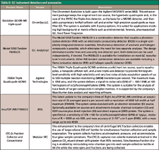
Table II: GC instrument detectors and accessories
O.I. Analytical brought its model 5350 Tandem PID/ELCD system to the show. This series combination detector mounts photoionization detection (PID) and electrolytic conductivity detection (ELCD) systems together in a singe integrated housing for Agilent GC systems that eliminates extradetector connecting tubing yet permits simultaneous independent operation as well as series operation. Other detector combinations — PID–flame ionization detection (FID) and PID–halogen-specific detection (XSD) — also are available.
In the supercritical fluid chromatography (SFC) realm, Modular SFC introduced its CFC-2c fraction collector and concentrator that adds large sample capability to its centrifugal fraction collection system. The new system enables the use of 250-cm3 bottles for simultaneous fraction collection and evaporation with recirculation of the rotor chamber gas at up to 50 ft3 (1.4 m3)/min.
GC Autosamplers and Accessories
A relatively large number of companies had new automated sampling systems for thermal desorption, purge-and-trap, and solid-phase microextraction (SPME) at this year's conference. In addition, two companies announced new cooperative ventures in the sampling area: PerkinElmer will now offer Teldyne Tekmar purge-and-trap samplers; Agilent and Markes International announced a strategic alliance for distribution and market development of analytical thermal desorption instruments used with GC and GC–MS systems.
The new product offerings are listed in Table III. The Master TD 4750 from O.I Analytical is an air sample processing system with a 50-position sorbent tube autosampler plus SUMMA cannister and Tedlar bag sampling capability. EST Analytical's Centurion W/S is an upgraded purge-and-trap autosampler for both water and soil samples that utilizes a robotic x–y sampling platform. Two of the samplers can connect to a single GC system. Teldyne Tekmar showed the Atomx Automated VOC Sample Prep System that incorporates a methanol clean-up system for high-level samples and three independent injection systems for standards, surrogates, and matrix spikes.
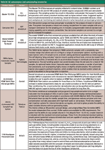
Table III: GC autosamplers and autosampling accessories
CDS Analytical had its model 5200HP high pressure pyrolyzer on display. This unique pyrolyzer can subject samples to high pressures and temperatures plus a variety of reactant gases and is targeted towards the characterization of biomass feedstocks under reactor conditions. The model 7150 headspace preconcentrator from Entech uses a unique active SPME first stage that helps with recovery of high boilers, plus a cryocooled Tenax trap for volatiles recovery, to improve overall sampling efficiency. Gerstel's Automated SPME Multi-Fiber EXchange (MFX) option for the company's MPS sampler manages the selection and regeneration of up to 25 SPME fibers, which are stored in individual sealed compartments. From Markes International, the Unity 2 Single Tube Thermal Desorber is a cryogen-free, single tube, two-stage thermal desorber that is compatible with reactive analytes and can be interfaced with headspace samplers, canisters, bags, and on-line air–gas streams.

Agilent announced the 7693A Series automatic liquid sampler, which replaces the company's previous workhorse liquid autosamplers. This is a new modular design that starts with a basic 16-sample turret and adds options such as three 50-vial racks and a heater–mixer–barcode reader module. The sampler also performs sandwiched injections for the addition of internal standards or additional solvent aliquots before injection.
General Accessories
Rounding out this year's panoply of new products at Pittcon 2009, the general accessories comprise a collection of interesting and useful devices. Agilent has introduced a new multimode inlet system that incorporates programmed-temperature vaporization (PTV) injection and split–splitless injection along with the company's Turn-Top inlet liner changing feature. Phenomenex showed its manual Cool-Lock nut for capillary GC columns that avoids inlet or detector thread stripping and locks the fused-silica column in place before installation. The SilTite FingerTite nut from SGE is similar in function and works with the company's SilTite metal ferrules that help reduce air background and contamination from polymeric ferrules.
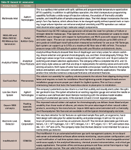
Table IV: General GC accessories
Other new products help manage gas supplies and connections. From CONCOA, the IntelliSwitch II is an automated switchover gas tank management system with networking capability, and Agilent showed a low gas alarm system attachment for standard tank regulator gauges that senses when the high pressure gauge needle has dropped below a set level. Both devices help prevent down time and potential damage from continued operation without carrier or detector gases. Restek's new electronic leak detector is an update to these sensitive hand-held devices that help avoid performance-robbing gas leaks.
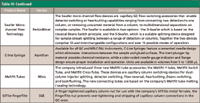
For sample handling, Hamilton's new color-coded C-line syringes have improved needle seal and plunger tip designs that provide improved chemical resistance and inertness. Some new vial septa, the Cepure-5000 septa from Pawling Scientific, are made from fluoropolymer-coated natural rubber for improved sealing and inertness.
A couple of new products for multidimensional GC were shown this year. Nlisis added three new configurations to its MeltFit tubes for column switching applications including cross, Y, and switching tube devices. The Swafer micro-channel flow system from Perkin Elmer enables detector switching or heartcutting capabilities ranging from connecting two detectors to one column, or removing unwanted material from a column, to multidimensional separations on complex samples. Swaferdevices are available in two configurations.

Companies listed in this article
Conclusion
Pittcon 2009 saw a broad collection of new products for GC. Ranging from high-end time-of-flight and triple-quadrupole GC–MS systems to column nuts and humble septa, this year's offerings demonstrate yet again that GC remains a growing and viable discipline. The conference itself reflects the evolving nature of the analytical sciences as new technologies develop from novelty to routine over the years, and I look forward to attending and reporting on next year's and subsequent conferences.
Acknowledgment
I would like to thank the manufacturers and distributors that kindly furnished the requested information before, during, and after Pittcon 2009, allowing a timely report on new product introductions. For those manufacturers who did not receive a preconference questionnaire this year and would like to be considered for inclusion into Pittcon 2010 coverage, please send the name of the primary company contact, the mailing address, fax number, and e-mail address to Patrick Kempf, Managing Editor, LCGC North America, c/o Advanstar Communications, 485 Rte. 1 South, Bldg. F, Iselin, New Jersey 08830, Attn.: Pittcon 2010 New GC Products.
John V. Hinshaw "GC Connections" editor John V. Hinshaw is senior Research Scientist at Serveron Corp., Hillsboro, Oregon, and a member of LCGC's editorial advisory board. Direct correspondence about this column to "GC Connections," LCGC, Woodbridge Corporate Plaza, 485 Route 1 South, Building F, First Floor, Iselin, NJ 08830, e-mail lcgcedit@lcgcmag.com. For an ongoing discussion of GC issues with John Hinshaw and other chromatographers, visit the Chromatography Forum discussion group at http://www.chromforum.com.
References
(1) R. Majors, LCGC 27(3), 206–222 (2009).
(2) R. Majors, LCGC 27(4), 290–304 (2009).
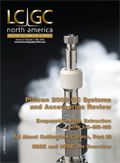
New Study Reviews Chromatography Methods for Flavonoid Analysis
April 21st 2025Flavonoids are widely used metabolites that carry out various functions in different industries, such as food and cosmetics. Detecting, separating, and quantifying them in fruit species can be a complicated process.
University of Rouen-Normandy Scientists Explore Eco-Friendly Sampling Approach for GC-HRMS
April 17th 2025Root exudates—substances secreted by living plant roots—are challenging to sample, as they are typically extracted using artificial devices and can vary widely in both quantity and composition across plant species.
Sorbonne Researchers Develop Miniaturized GC Detector for VOC Analysis
April 16th 2025A team of scientists from the Paris university developed and optimized MAVERIC, a miniaturized and autonomous gas chromatography (GC) system coupled to a nano-gravimetric detector (NGD) based on a NEMS (nano-electromechanical-system) resonator.

.png&w=3840&q=75)

.png&w=3840&q=75)



.png&w=3840&q=75)



.png&w=3840&q=75)











